Key takeaways
- Local government reforms enhance transparency, accountability, and community engagement, crucial for fostering trust among citizens.
- Initiating a petition involves clear goal definition, community support, and effective communication to drive change.
- Engagement through meetings and social media helps unify community efforts and amplifies voices calling for reform.
- Persistence and building a strong network are essential for overcoming bureaucratic challenges and achieving meaningful change.
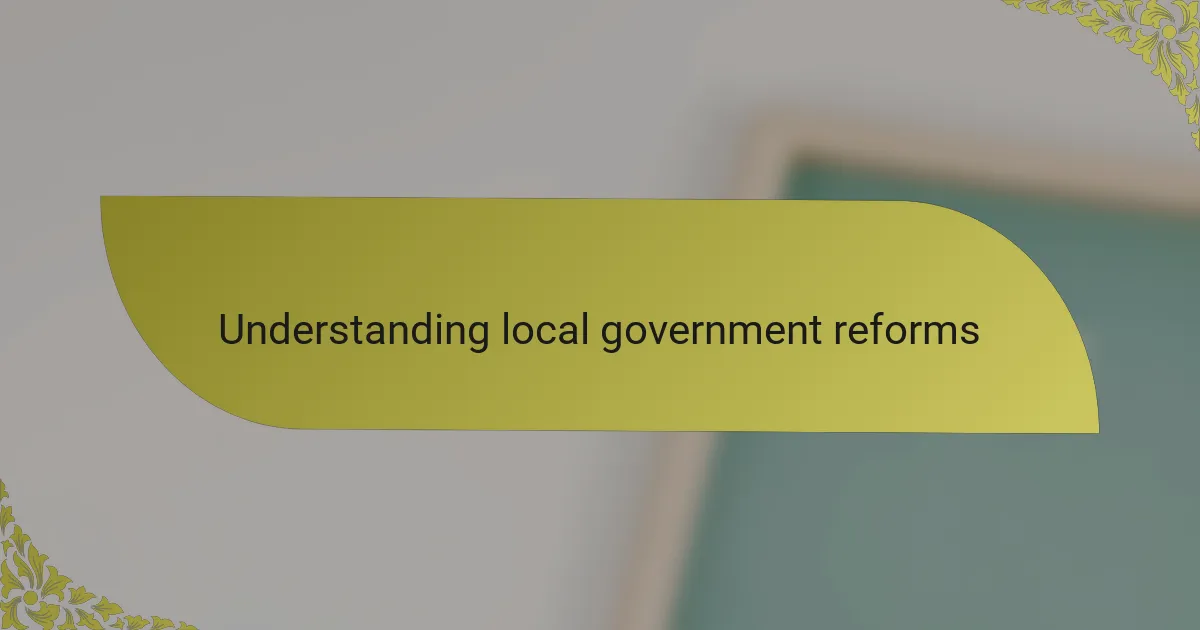
Understanding local government reforms
Local government reforms can significantly impact our communities, shaping everything from how resources are allocated to the level of accountability officials have to their constituents. I vividly recall attending a town hall meeting where residents voiced their frustrations about outdated policies. It struck me how vital these reforms are for promoting transparency and ensuring that local governance truly reflects the needs and desires of the community.
When I first delved into the realm of local government reforms, I learned that they aren’t just bureaucratic changes; they are essential for fostering civic engagement and trust. For example, introducing measures for better public participation can transform how decisions are made, leading to a more empowered citizenry. My experience of witnessing those who felt unheard finally getting a platform was inspiring and reaffirmed my commitment to advocating for these necessary changes.
Here’s a comparison of some common local government reforms:
| Reform Type | Description |
|---|---|
| Public Engagement Initiatives | Programs aimed at increasing citizen involvement in decision-making processes. |
| Transparency Measures | Policies that require open access to government documents and meetings. |
| Performance Accountability | Frameworks to evaluate government performance and identify areas for improvement. |
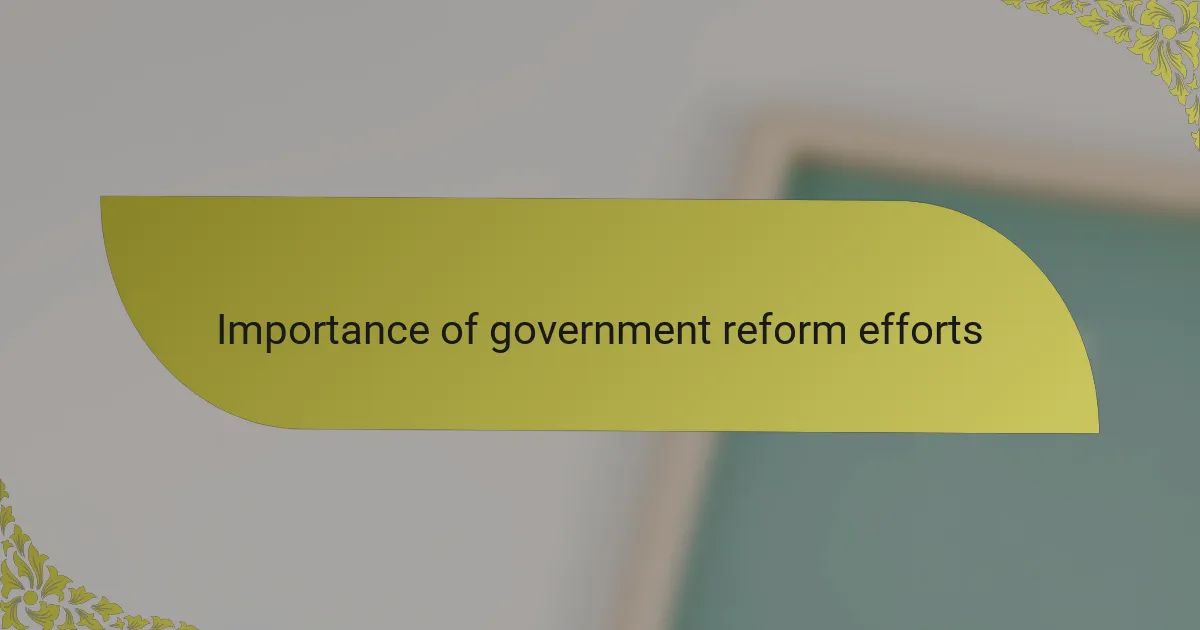
Importance of government reform efforts
Reforming local government is essential for fostering transparency and accountability. Based on my own experiences, I’ve seen firsthand how minor changes can create significant impacts in community trust and participation. When citizens feel their voice matters, they become more engaged in the decision-making processes, leading to a more vibrant democracy.
Additionally, these reforms can help address systemic issues like inefficient bureaucracies and outdated regulations. For example, I once petitioned for more accessible public meetings, which not only increased attendance but also allowed more diverse opinions to be heard. This change was a turning point that reinforced my belief in the power of grassroots advocacy.
| Key Aspect | Impact of Government Reform |
|---|---|
| Transparency | Increases public trust and involvement |
| Efficiency | Reduces bureaucracy and streamlines processes |
| Community Engagement | Encourages diverse voices and participation |
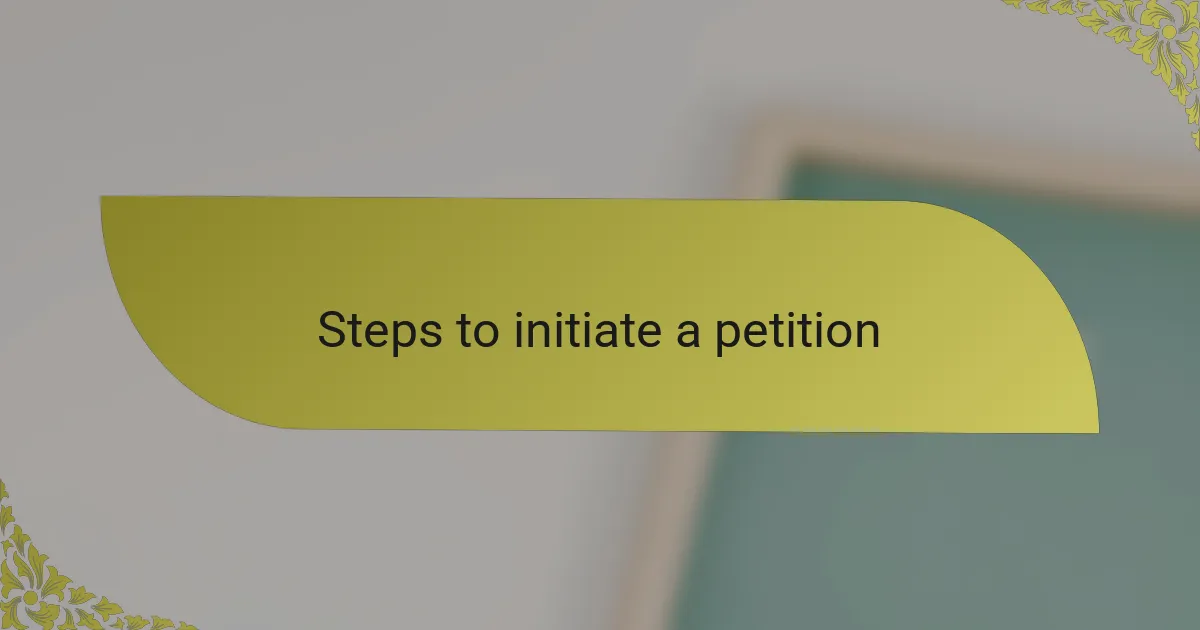
Steps to initiate a petition
When I decided to initiate a petition for local government reforms, I found it essential to clearly define my goals. For me, it was about creating a transparent process that made government accountability accessible to everyone. I recall the excitement and nervousness I felt when starting the petition; it was empowering to think I could influence change in my community.
Here are the steps I took to get started:
- Identify the issue: Spend time understanding the specific reforms needed in your local government.
- Gather support: Share your idea with friends and community members to build enthusiasm.
- Draft the petition: Clearly outline your demands and the changes you seek.
- Collect signatures: Follow local laws on signature collection to ensure your petition is valid.
- Submit the petition: Present your petition to the appropriate authority or local government body.
- Follow up: Stay engaged with your supporters and the authorities to keep the momentum going.
Each step was crucial in making my voice heard, and I learned firsthand how collective action can ignite change.
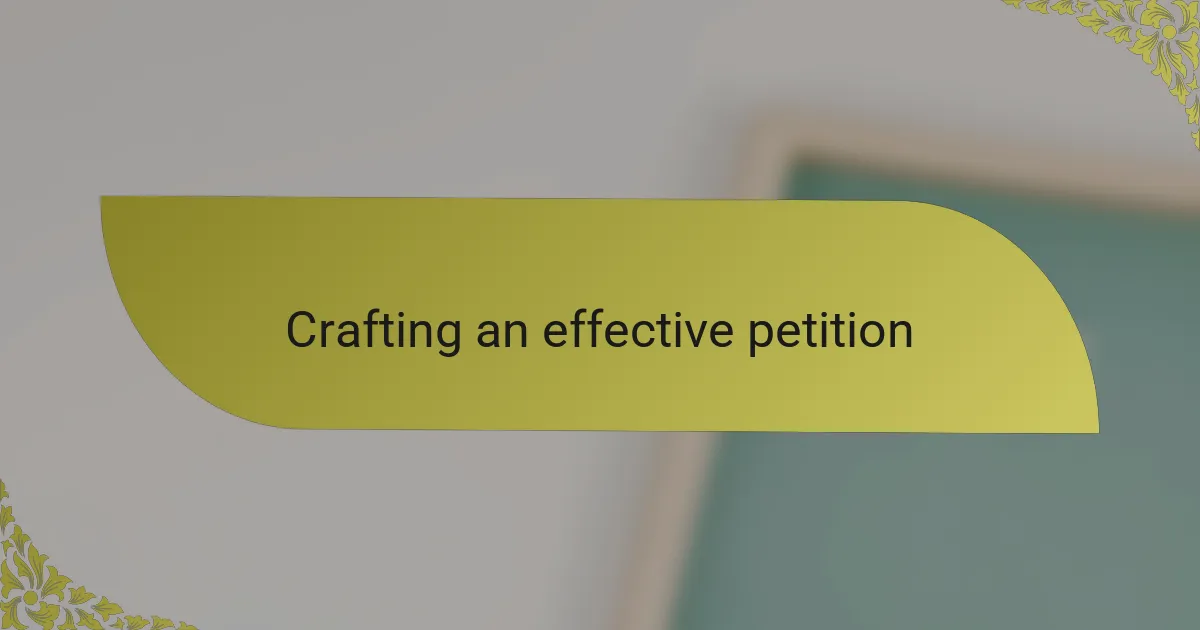
Crafting an effective petition
When I set out to craft my petition, the first step was narrowing the focus to a clear and specific issue that resonated with my community. I remember sitting at my kitchen table, brainstorming with friends about the changes we desperately wanted to see in local government. It was vital to articulate the problem while connecting emotionally with people so they’d feel compelled to support our cause.
To ensure the petition would be effective, I focused on a few key elements:
- Clarity: Define the issue clearly and concisely to avoid confusion.
- Personal Stories: Incorporate testimonies that illustrate how the issue affects community members.
- Call to Action: Specify what action you want the local government to take.
- Research: Back claims with facts or data to lend credibility to the petition.
- Visuals: Use engaging design elements to make the petition stand out and attract attention.
By making these considerations, I realized we could create a document that not only informed but inspired change throughout our community.
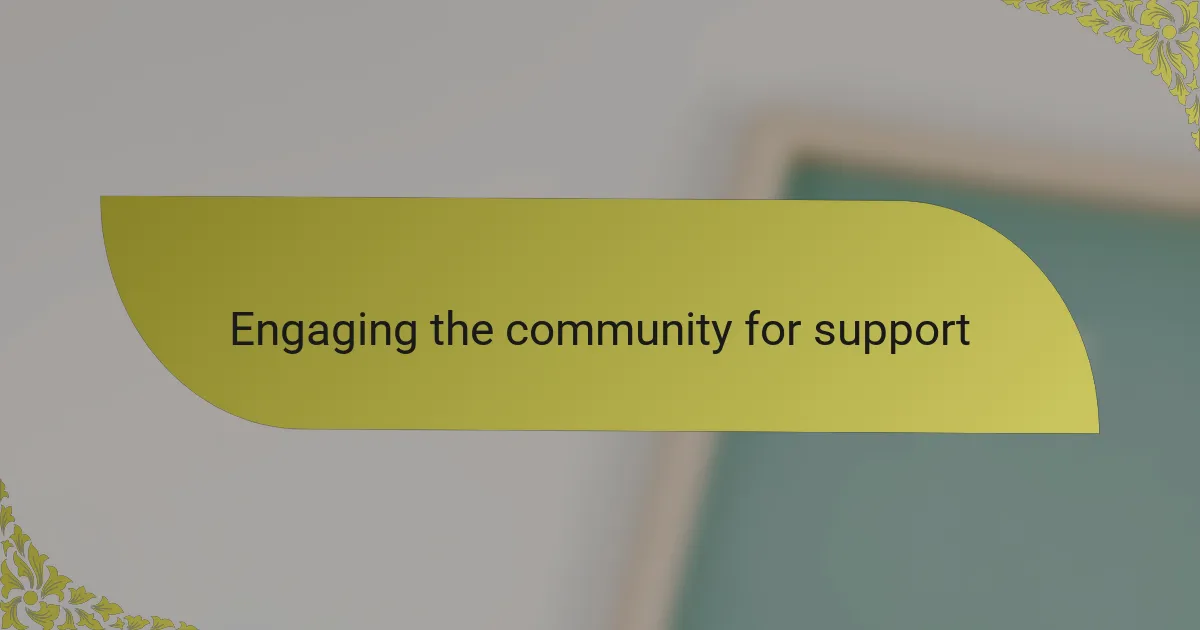
Engaging the community for support
Engaging the community was crucial in my quest for local government reforms. I remember sitting on my porch, pondering how to bring people together for a common cause. I decided to host a neighborhood meeting, where I openly shared my vision and gathered feedback. The passion and urgency I felt that night resonated with others, igniting a fire of support that I hadn’t expected.
Additionally, I utilized social media platforms to reach a broader audience. By posting updates, sharing personal stories about why these reforms mattered, and encouraging others to voice their opinions, I saw the community rally around the cause. It was deeply rewarding to watch friends and neighbors come together, unified by the desire for change.
- Hosted community meetings to discuss concerns and gather ideas
- Used social media for outreach and engagement
- Shared personal stories to connect emotionally and inspire others
- Encouraged volunteers to help spread the word and gather signatures
- Created pamphlets outlining the reforms to distribute in local businesses
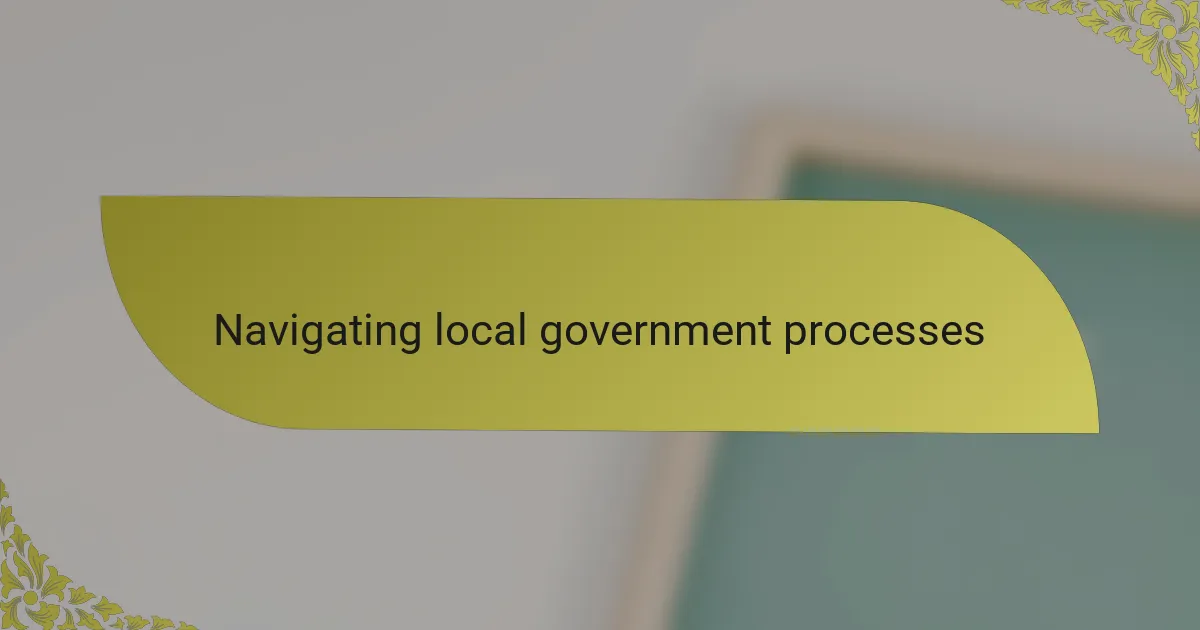
Navigating local government processes
Navigating local government processes can often feel like traveling through a maze. I remember my first experience trying to understand the layers of bureaucracy—what a challenge! Each form and meeting seemed daunting, yet, with determination, I learned that local government is not an insurmountable wall but a system that can be engaged with patience and clarity.
As I navigated through community meetings, I discovered the importance of being prepared. Having my facts straight and understanding the rules helped me communicate effectively. When you know your rights and the processes, it creates empowerment—something I felt strongly when I finally saw my ideas gaining traction.
Here’s a comparison table that outlines the various steps and necessary actions in the local government petition process:
| Process Step | Description |
|---|---|
| Research Local Issues | Identify community issues that require reform by engaging with residents. |
| Gather Support | Use petitions to collect signatures showing community backing for the reforms. |
| Submit Proposal | Present your well-researched proposal to local government officials or councils. |
| Attend Public Meetings | Participate in local government meetings to voice your concerns and proposed changes. |
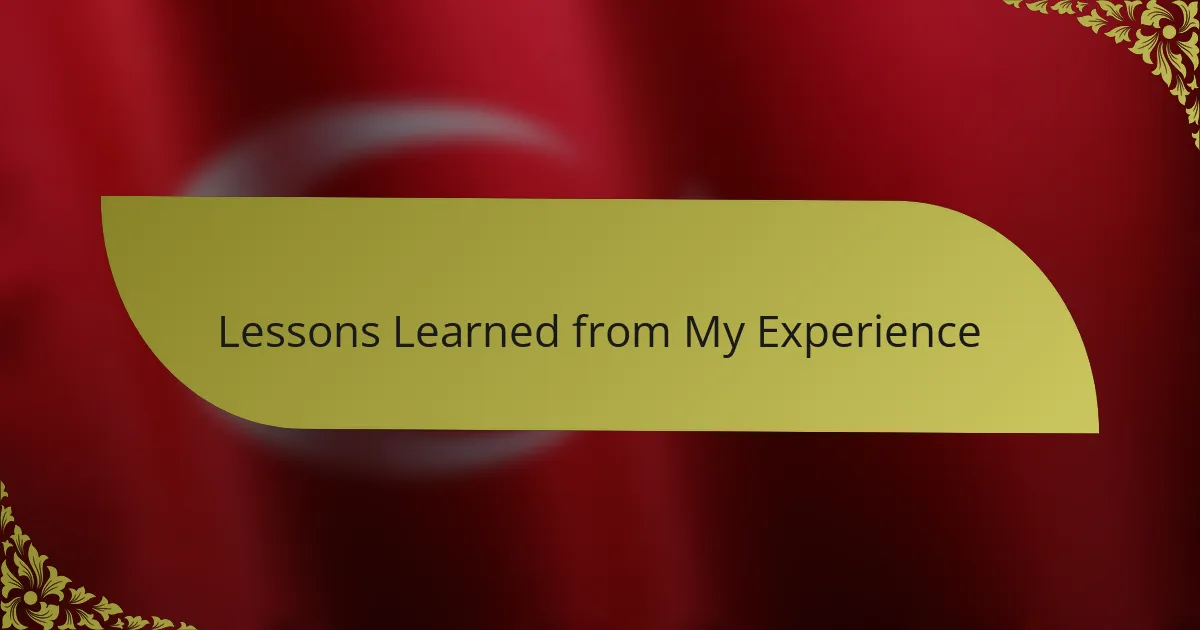
Lessons learned from my experience
One of the biggest lessons I learned during my petition for local government reforms was the importance of persistence. There were moments when I felt overwhelmed, especially when faced with bureaucratic hurdles that seemed insurmountable. However, each setback fueled my determination to push harder, reminding me that change often comes slowly but steadily.
Another key takeaway was the value of building a strong community network. I reached out to neighbors and local organizations for support, and their involvement not only lent credibility to my petition but also created a sense of camaraderie. It became clear to me that collective voices carry much more weight than a single one.
- Understand that change takes time; celebrate small victories along the way.
- Engage actively with your community; people are more willing to help than you might think.
- Be prepared for obstacles and view them as opportunities for growth rather than discouragement.
- Communicate clearly and passionately; authenticity resonates with others.
- Stay informed about local issues; knowledge builds a solid foundation for your arguments.